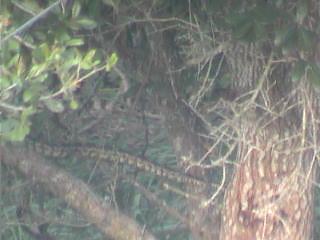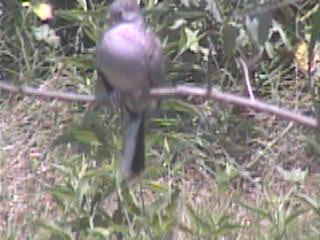Here are some of my favorite shots from the last few days:
birdbrain got this great shot of a snake (a diamondback rattlesnake, maybe? any herpetology experts want to chime in?) back on July 30:
After a long dry spell, several users have taken photos of Wild Turkeys lately, including this shot with two turkeys by kryptonkay on July 31:
Today (actually, yesterday now; August 1), tinyang got this shot of a bird that’s a real mystery for me. I’m really not sure what to make of it. An Inca Dove in an unusual body position, maybe? Are those white feathers on the tail?
Several photos were taken yesterday of a female Cardinal feeding a begging Bronzed Cowbird, including this great shot by rafa:
I didn’t realize that Bronzed Cowbirds were nest parasites, just like Brown-headed Cowbirds, but according to Wikipedia, all cowbirds are nest parasites. So it looks like this is a shot of a fledgling begging for food from its adoptive mother.




I do think my picture is an Inca Dove. A few bird books I’ve consulted (Sibley’s Eastern guide and National Geographic 4th Ed. amongst others) do specify that Inca Doves have white feathers on the outer edging of their tail. But it did strike a unique pose for the camera.
Re: the cowbird and cardinal pic, I did happen upon some interesting info regarding cowbirds recently:
http://www.cbc.ca/quirks/archives/00-01/may2601.htm
“Baby cowbirds have a problem. Their mothers abandon them as
eggs, leaving them in another bird’s nest to be raised by a
host species. So the young cowbirds have no idea what
another cowbird looks like or sounds like.
Now a group of researchers at Cornell have discovered that
young cowbirds are born knowing a password, a specific call
that all cowbirds the world over share. They use this
password to find other cowbirds, who then teach them the
local cowbird dialect.
Mark Hauber, a doctoral candidate at Cornell was the one who
made the original discovery.”
I just thought that was a very unique adaptation.
Fascinating, tinyang. thanks for the link!!